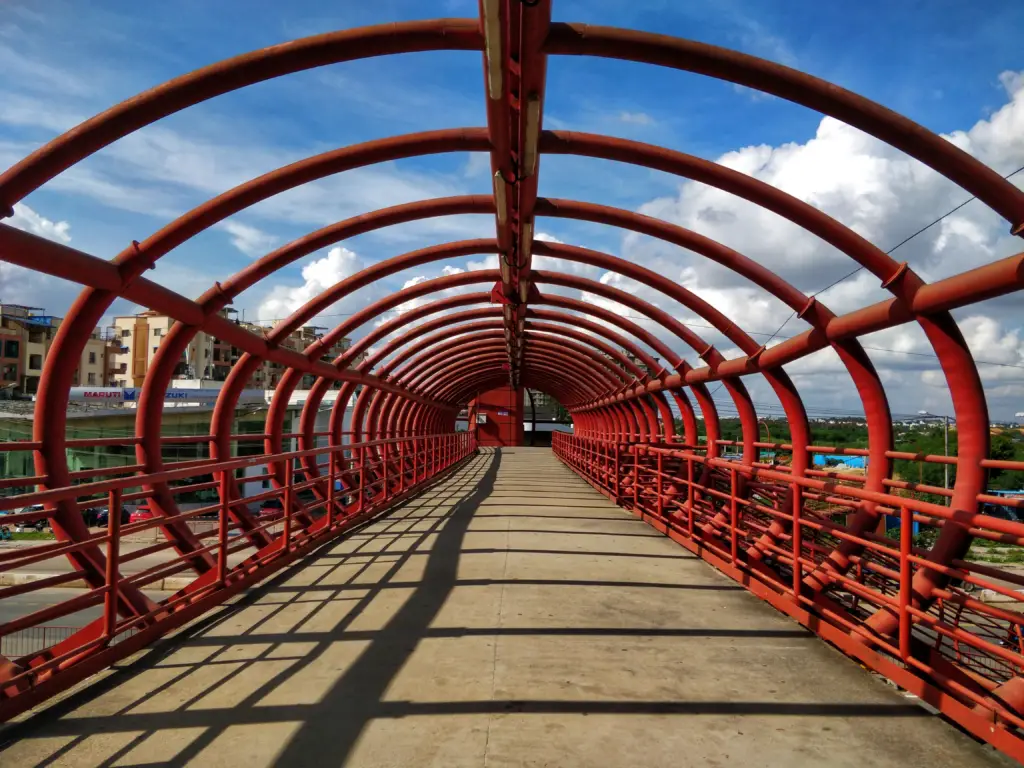Bridge railings are a vital component in the construction of any bridge. They provide support and stability to the structure, and can also help to improve its appearance. With so many options on the market, choosing the right bridge railing can be a daunting task. In this article, we’ll take a look at the different types of railings that are available, as well as their advantages and disadvantages.
What are Bridge Rails?
Bridge railings are panels or posts that are installed along the edges of a bridge. They are typically made from metal, concrete, or stone, and they can range in height from waist-high to shoulder-high. They serve two primary purposes: to provide a barrier between the edge of the bridge and the traffic below and to provide a visual aesthetic for the bridge. There are many different types of bridge railings, each with its advantages and disadvantages.
Some of the most common types of bridge railings include metal picket fences, metal pipe rails, concrete barrier walls, and stone balusters. Metal picket fences are a popular choice for bridges because they offer a high degree of visibility while still providing an adequate barrier between the edge of the bridge and the traffic below.
However, metal picket fences can be susceptible to rust and corrosion over time, and they may require more maintenance than other types of bridge railings. Metal pipe rails are another popular type of railing for bridges. They offer good visibility and durability, but they can be more expensive than other options. Concrete barrier walls are a good choice for bridges that carry heavy traffic, as they are very sturdy and can withstand a lot of wear and tear.
The different types of bridge railings
There are many different types of bridge railings, each with its advantages. Some of the most popular types include:
- Wrought iron railings
- Aluminum railings
- Glass railings
- Concrete railings
Wrought Iron Railings
Wrought iron bridge railings are a common sight in many cities and towns. They are typically made from iron that has been heated and then shaped into rails. The iron is then coated with a protective layer to prevent rusting. Bridge railings are usually installed on bridges to protect pedestrians and vehicles.
Wrought iron railings are very strong and durable, making them ideal for use in high-traffic areas. They are also very easy to maintain, as they only require occasional painting or touch-ups.

Aluminum Railings
Aluminum bridge railings are a great choice for many reasons. First, they’re extremely durable and can withstand heavy traffic and weather conditions. Second, they’re low maintenance – you won’t have to worry about painting or rusting. And third, they look great! aluminum bridge railings add a touch of sophistication to any setting.
Glass Railings
The glass bridge railings are a new safety feature that is being installed on bridges. The glass is see-through and will help drivers see what is ahead of them. This will help to prevent accidents. The glass bridge railings are also very strong and will not break easily.
China’s new glass bridge has become a popular tourist destination. The bridge, which is located in the Hunan province, is made of glass panels that are 3 feet wide and 6.5 feet tall. The bridge spans 1,000 feet and is suspended 300 feet above a river. The glass panels are held together by stainless steel frames.
Glass railings offer a modern look that can complement any design style. They are also easy to keep clean and maintain.
Concrete Railings
Bridge railings are an important safety feature, preventing people and vehicles from falling off the edge of the bridge. They are usually made of concrete, which is a durable material that can withstand weather and wear. Bridge railings must be tall enough to prevent people and vehicles from falling off, but not so tall that they obstruct the view.

Wood Railings
Wood bridge railings are a great way to add safety and style to your bridge. They can provide a barrier between pedestrians and traffic, as well as a decorative element to the structure. Wood bridge railings are available in a variety of styles and can be custom-made to fit your specific needs.
No matter what your needs, there is a type of bridge railing that is right for you. Be sure to consider all of your options before making a final decision.
The advantages of each type of bridge railing
There are many different types of bridge railings, each with its advantages. Some common types of railings include wood, metal, and glass. Wood railings are typically the most affordable option, while metal and glass railings offer a more modern look. Glass railings also have the advantage of being see-through, which can help avoid potential hazards.
How to choose the right type of bridge railing for your project
There are many factors to consider when choosing the right type of bridge railing for your project. The most important factor is the intended use of the bridge. Will the bridge be used for pedestrians only, or will vehicles also be using it? If vehicles will be using the bridge, then you will need to choose a railing that can withstand the weight and impact of a vehicle. Other considerations include the height of the railing, the width of the bridge, and the climate in which the bridge will be used.
Some of the most popular types of bridge railings are metal, wood, and concrete. Each has its advantages and disadvantages that you will need to weigh when making your decision. Metal railings are very strong and durable, but they can be expensive. Wood railings are less expensive but may not be as strong as metal railings. Concrete railings are very strong and durable, but they can be difficult to install.
Once you have considered all of these factors, you should be able to narrow down your choices and select the best type of bridge railing for your project.
Maintenance of Bridge Railings
Bridge rails are an important part of keeping our bridges safe and in good condition. They need to be regularly inspected and maintained to ensure that they are up to code and in good repair. This can be a daunting task, but with a little planning and regular maintenance, it can be easily accomplished. Here are some tips for maintaining your bridge rails:
- Inspect your bridge railings regularly. Look for any signs of wear or damage, and make sure that they are still securely attached to the bridge.
- If you notice any damage, repair it immediately. This may require hiring a professional, but it is important to make sure that your bridge railing is in good condition.
- Keep your bridge railing clean. This will help to prevent any further damage and will make it easier to spot any problems.
- If you are unsure of how to properly maintain your bridge railing, consult with a professional. They will be able to advise you on the best way to care for your specific type of railing.
How are bridge railings regulated?
There are many ways to regulate bridge railings. Some of the most common ways are by code, type, and span.
Code: The most common way to regulate bridge rails is by code. Many codes dictate how a railing should be made, installed, and inspected. The International Building Code (IBC) is the most widely used code for regulating bridge railings.
Type: Another way to regulate bridge rails installation is by type. The most common types of railings are guardrails and handrails. Guardrails are typically required on bridges with a deck height of more than 20 inches above the roadway or water below. Handrails are typically required on bridges with a deck height of more than 30 inches above the roadway or water below.
Span: Another way to regulate bridge railings is by span. The maximum span of a railing is typically 8 feet but may vary depending on the code or type of railing required.
Conclusion
There are many different types of bridge railings, each with its advantages. The type of railing you choose will depend on your budget, the local climate, and the look you want to achieve. Whichever type you choose, make sure it is installed correctly to ensure the safety of everyone who uses the bridge.
What do you call the railing on a bridge?
The railings on a bridge are panels or posts that are installed along the edges of a bridge to provide a barrier between pedestrians and traffic, as well as a decorative element to the bridge structure.
What are bridge railings made of?
Bridge railings are typically made from metal, concrete, glass, wood, or stone,
What type of bridge railing is best?
There are many different types of bridge rails, and the best type for a particular bridge depends on several factors. Some of the most common types of bridge rails are concrete, metal, and wood. Each type has its advantages and disadvantages, so it’s important to choose the right type of railing for your specific needs.
What are the specifications for bridge railings?
There are a few things to consider when specifying bridge railings. First, you need to decide what type of railing you want. There are many different styles of railings, so you should pick one that will complement the design of the bridge. Second, you need to make sure that the railing is strong enough to support the weight of the traffic that will be using it. Third, you need to make sure that the railing is tall enough to prevent people from falling off the bridge. Finally, you need to make sure that the railing is installed correctly and meets all local building codes.

